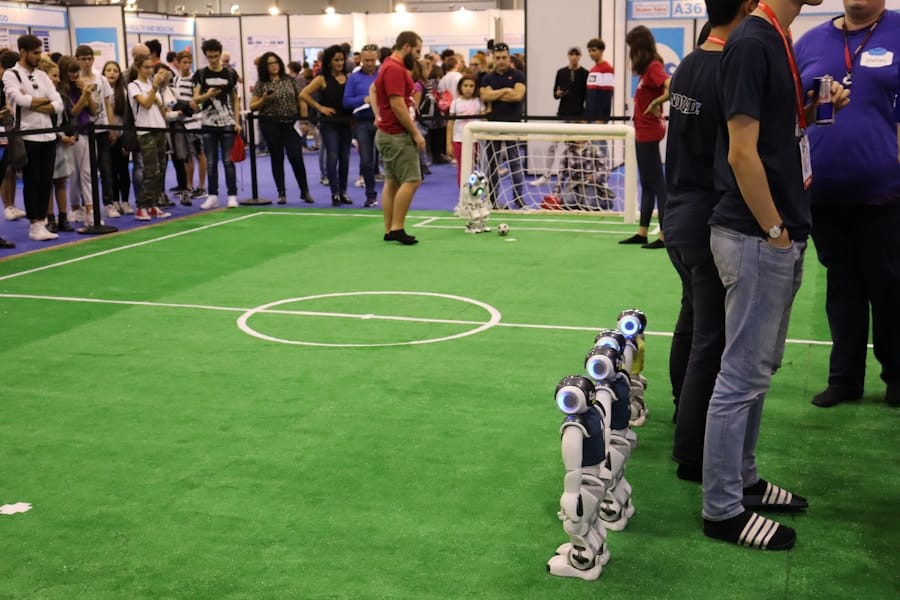Reinforcement Learning (RL) is a subfield of machine learning that focuses on how agents ought to take actions in an environment to maximize cumulative rewards. Unlike supervised learning, where the model learns from labeled data, RL operates on the principle of trial and error. An agent interacts with its environment, receiving feedback in the form of rewards or penalties based on its actions.
This feedback loop enables the agent to learn optimal strategies over time, making RL particularly powerful for tasks where the correct actions are not explicitly defined but must be discovered through exploration. The foundational concept of RL can be traced back to behavioral psychology, where organisms learn from the consequences of their actions. In the context of artificial intelligence, RL has gained traction due to its ability to solve complex problems that require sequential decision-making.
The development of algorithms such as Q-learning and policy gradients has further propelled the field, allowing for more sophisticated approaches to learning optimal policies. As computational power has increased and access to large datasets has become more prevalent, RL has emerged as a critical tool in various domains, including robotics, gaming, and autonomous systems.
Key Takeaways
- Reinforcement learning is a type of machine learning where an agent learns to make decisions by taking actions in an environment to maximize some notion of cumulative reward.
- Reinforcement learning plays a crucial role in robotics by enabling robots to learn and adapt to their environment, making them more autonomous and capable of handling complex tasks.
- Applications of reinforcement learning in robotics include autonomous navigation, object manipulation, and task planning, leading to advancements in industries such as manufacturing, healthcare, and logistics.
- Challenges and limitations of reinforcement learning in robotics include the need for extensive training data, the complexity of real-world environments, and safety concerns in high-stakes applications.
- Case studies have shown successful implementation of reinforcement learning in robotics, such as in the development of self-driving cars, robotic arms for industrial automation, and humanoid robots for various tasks.
The Role of Reinforcement Learning in Robotics
Adaptability in Dynamic Environments
This adaptability is particularly crucial in dynamic environments where conditions can change rapidly, necessitating a flexible approach to problem-solving. One of the key advantages of using RL in robotics is its ability to handle high-dimensional state spaces. Robots often operate in environments with numerous variables, such as varying terrain, obstacles, and dynamic objects.
Processing Complexity with RL Algorithms
RL algorithms can process this complexity by learning policies that dictate the best actions to take in different states. For instance, a robotic arm tasked with assembling components can use RL to optimize its movements based on feedback from its environment, gradually improving its efficiency and accuracy.
Enhanced Performance and Reduced Manual Programming
This capability not only enhances the robot’s performance but also reduces the need for extensive manual programming and fine-tuning.
Applications of Reinforcement Learning in Robotics

The applications of reinforcement learning in robotics are vast and varied, spanning industries from manufacturing to healthcare. In industrial automation, robots equipped with RL algorithms can learn to optimize assembly line processes by adjusting their movements based on real-time feedback. For example, a robotic system might learn to pick and place items more efficiently by experimenting with different strategies and receiving rewards for successful placements.
This self-optimization leads to increased productivity and reduced operational costs. In the field of autonomous vehicles, reinforcement learning is employed to enhance navigation and decision-making capabilities. Self-driving cars utilize RL to learn how to navigate complex traffic scenarios by simulating various driving conditions and receiving feedback on their performance.
By continuously refining their policies based on real-world data, these vehicles can improve their ability to make safe and efficient driving decisions. Moreover, RL can be applied in robotic surgery, where surgical robots learn optimal techniques for performing delicate procedures by analyzing outcomes and adjusting their actions accordingly.
Challenges and Limitations of Reinforcement Learning in Robotics
Despite its potential, reinforcement learning in robotics is not without challenges and limitations. One significant hurdle is the requirement for extensive training data, which can be time-consuming and resource-intensive to gather. In many cases, training a robot through RL involves simulating thousands or even millions of interactions with its environment.
This process can be particularly challenging in real-world settings where safety is a concern, as robots may need to explore potentially dangerous scenarios to learn effectively. Another limitation lies in the exploration-exploitation trade-off inherent in RL algorithms. While exploration allows agents to discover new strategies and improve their performance, excessive exploration can lead to suboptimal actions that may result in failures or accidents.
Striking the right balance between exploring new possibilities and exploiting known successful strategies is crucial for effective learning. Additionally, the convergence of RL algorithms can be slow, requiring careful tuning of hyperparameters and extensive computational resources.
Case Studies: Successful Implementation of Reinforcement Learning in Robotics
Several case studies illustrate the successful implementation of reinforcement learning in robotics across various sectors. One notable example is OpenAI’s Dota 2-playing bot, which utilized deep reinforcement learning techniques to compete against human players at a high level. The bot learned through self-play, engaging in millions of matches against itself to refine its strategies.
This approach not only demonstrated the potential of RL in complex gaming environments but also highlighted its applicability in developing intelligent agents capable of strategic decision-making. In industrial settings, companies like Amazon have employed reinforcement learning algorithms in their robotic systems for warehouse automation. Robots are trained to navigate through aisles, pick items from shelves, and optimize their routes based on real-time inventory data.
By leveraging RL, these robots have significantly improved their efficiency and accuracy in fulfilling orders, showcasing how RL can transform traditional logistics operations into more agile and responsive systems.
Future Implications of Reinforcement Learning in Robotics

The future implications of reinforcement learning in robotics are profound and far-reaching. As advancements continue in both hardware capabilities and algorithmic efficiency, we can expect robots to become increasingly autonomous and capable of handling complex tasks across diverse environments. The integration of RL with other technologies such as computer vision and natural language processing will further enhance robots’ ability to understand and interact with their surroundings.
Moreover, as RL algorithms become more sophisticated, we may witness a shift towards collaborative robotics, where multiple robots work together seamlessly to achieve common goals. This could revolutionize industries such as construction or disaster response, where teams of robots could coordinate their actions based on shared learning experiences. The potential for RL to enable swarm intelligence among robotic systems opens up new avenues for research and application.
Ethical Considerations in the Use of Reinforcement Learning in Robotics
As with any emerging technology, the use of reinforcement learning in robotics raises important ethical considerations that must be addressed proactively. One primary concern is the safety of autonomous systems operating in real-world environments. Ensuring that robots make decisions that prioritize human safety is paramount, particularly in applications such as autonomous vehicles or healthcare robotics.
Developers must implement robust safety protocols and fail-safes to mitigate risks associated with unexpected behaviors resulting from RL training. Additionally, there are ethical implications related to data privacy and security when deploying RL systems that rely on large datasets for training. The collection and use of data must be conducted transparently and responsibly, ensuring that individuals’ privacy rights are respected.
Furthermore, as robots become more autonomous through RL, questions arise regarding accountability for their actions—who is responsible if a robot causes harm or makes a poor decision? Addressing these ethical dilemmas will be crucial as society increasingly integrates intelligent robotic systems into daily life.
The Impact of Reinforcement Learning on the Future of Robotics
The impact of reinforcement learning on the future of robotics is poised to be transformative, reshaping how machines interact with their environments and perform tasks traditionally reserved for humans.
From industrial automation to healthcare solutions, the potential benefits are vast.
However, alongside these advancements come significant challenges that must be navigated thoughtfully.
The journey ahead promises exciting developments that could redefine our relationship with technology and open new frontiers for innovation across multiple sectors.
If you are interested in learning more about how technology is impacting different industries, you may want to check out this article on

